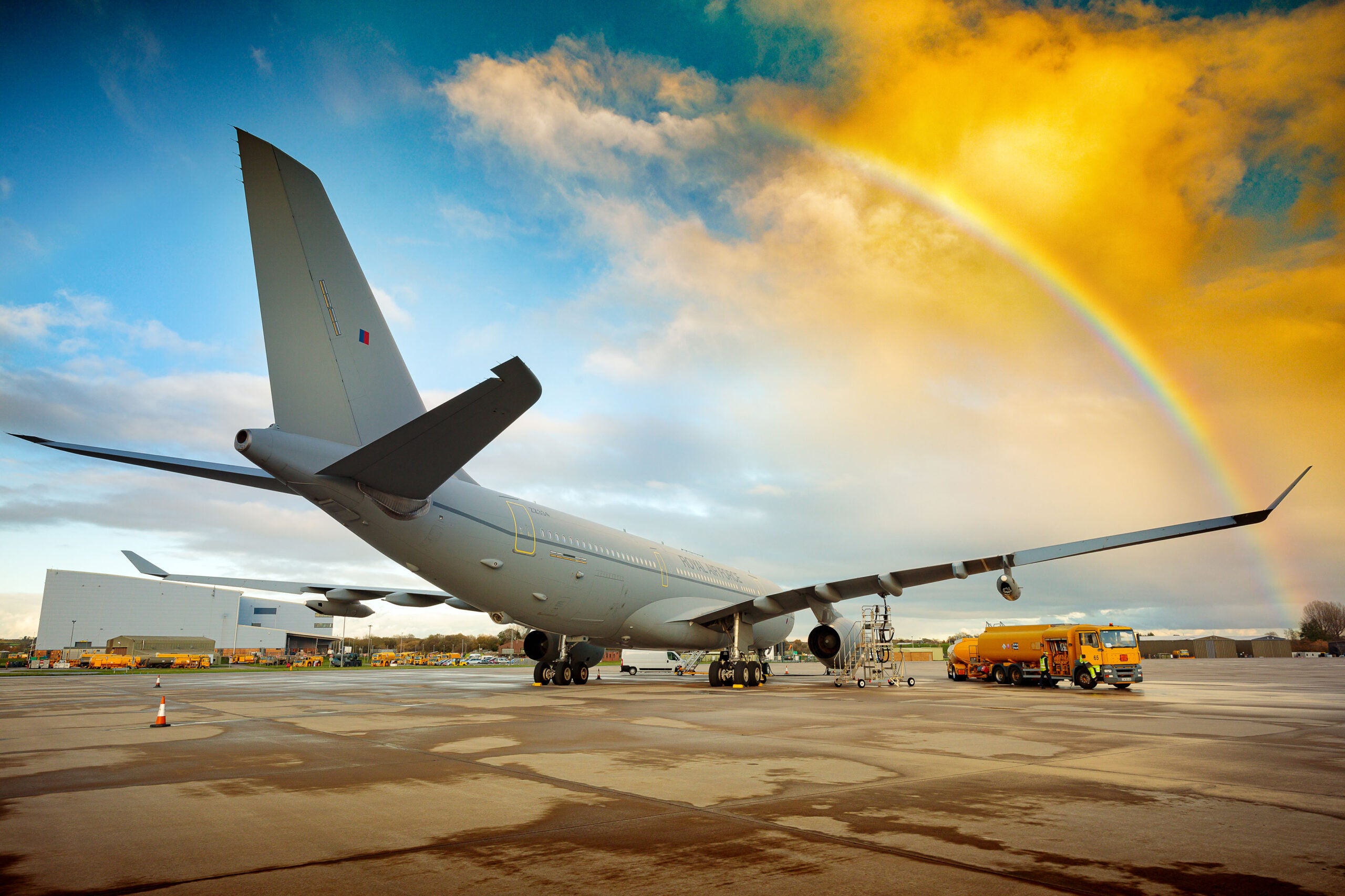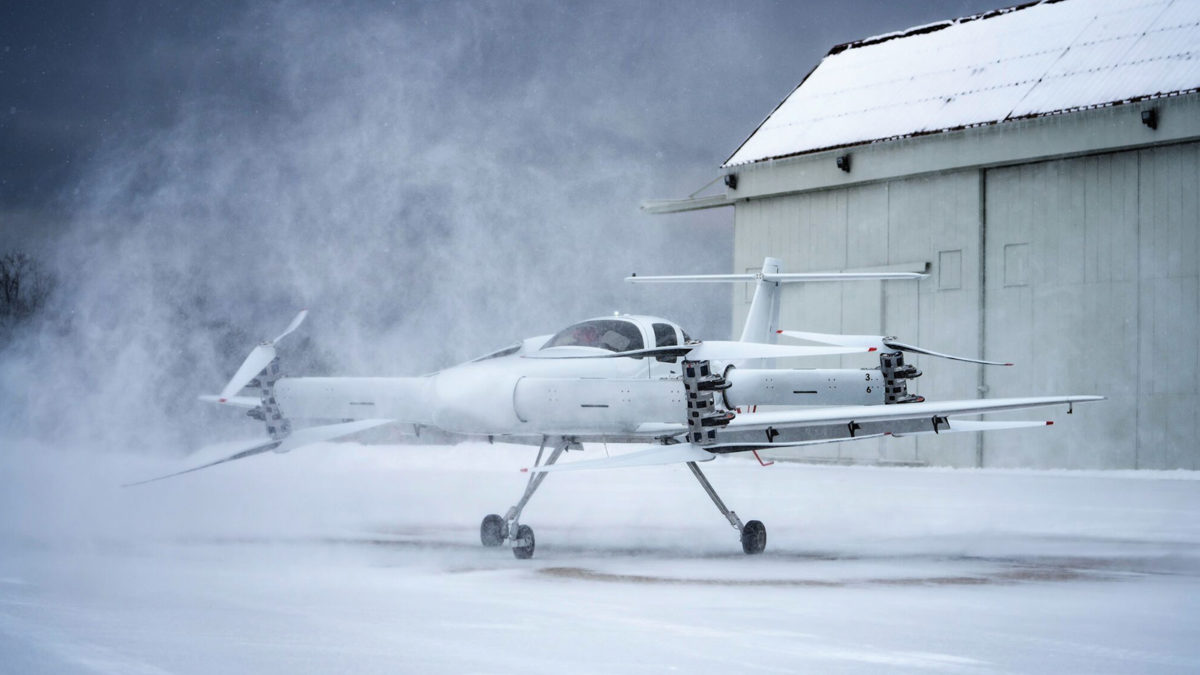Aircraft Testing - Aerospace engineers and everyday passengers have confidence when they board an airplane that it is safe to fly. But few people really appreciate all the testing that goes into making sure their planes can withstand the many different conditions and eve that can happen in flight or on the ground.
For example, the next time you're on a plane and you're going through an area of mild to moderate turbulence, look out the window and watch the planes rise and fall at the airport. Allows the wings to flex for a smoother ride.
Aircraft Testing

Structurally, aircraft manufacturers put their new designs through very thorough wing-bending testing - also known as wing load testing. In testing, for example, Boeing bent the wings of the new 787 Dreamliner "about 25 feet". That's about 150% of the maximum flexibility an airport should run under normal flight conditions. It is known that passenger jets can maintain wing curvature "closer to 90 degrees". This is very convenient, even if it is difficult to imagine.
Boeing Resumes 777x Flight Testing After Recent Engine Issue
What's more convenient is that this is just one of many tests used by aircraft designers and participants in finished product testing. Here we can do it all.
Here's some more information on some of the different tests that airports - and the parts that go into airports - go through.
Many of us remember the United States Airline Flight 1549 departing from LaGuardia Airport in New York City at noon on January 15, 2009 was attacked by a flock of wild geese three minutes into flight. The plane lost power and Captain Chesley "Sully" Sullenberger directed the plane to land safely in the Hudson River. Amazingly, no one was killed in the crash, but the event highlights the importance of maintaining an aircraft that is structurally sound and powered, even in the event of a bird crash.
The birds are often heavier than they look. Each goose in the Flight 1549 incident would have weighed about 8 pounds. If you think about it, the force applied to an 8-pound bird at about 200 mph is equivalent to an 8-pound bowling ball hitting you at 200 mph. That will do some damage.
An F 4e Fighter Plane Covered With Ice Is Seen During A Snow And Freezing Rain Test At The Aerospace Test And Evaluation Centre In Seosan, About 150 Km (93 Miles) Southwest Of
Perhaps the biggest threat from bird collisions is that they are sucked into the jet engines of planes. Jets with engines mounted under the wings are more likely to see birds sucked in than those with engines mounted closer to the rear of the fuselage.
Provides a bird strike simulator - - sometimes called a "chicken gun" - to test various parts of an airframe or engine. The test involved launching real or simulated birds onto an airport runway at up to 400 mph. Several Codes of Federal Regulations (CFRs) deal with air quality standards, and these standards cover the ability to withstand damage from birds of different weights hit during travel. There are standardized methods for testing bird impacts and can help designers ensure that their aerodromes meet requirements.
Additionally, analysis of bird attacks shows that repair costs for airports after bird strikes are more than $1.2 billion per year in the United States alone. This highlights the need to prevent bird attacks in addition to ensuring that aircraft can survive them.

Back in high school physics, we learned about the difference between position, velocity, and acceleration. Location is where you are at a particular time. Speed is how fast your position is moving in a particular direction. Acceleration is how fast your speed is changing.
Extreme Boeing 747 Testing Videos
People sometimes think of speed as acceleration, but really it is speed. Again, acceleration is the change in speed, and that's how you feel when you're pushed back into your seat as the pilot takes off.
Just as you experience g acceleration during a flight, so does an airplane. A 60-degree co-ordinated turn produces twice the force of gravity directly perpendicular to the plane's horizontal axis. You'll probably never experience such a big turn in a commercial airliner, but they've been tested for such g-forces and more.
The increased g-force puts stress on the aerodrome and can adversely affect many structural components of the aerodrome. For example, acceleration forces during take-off, landing, and in flight can put stress on the aircraft's joints, washers, racks, and other components. In addition, the landing gear, hydraulics, and even the seat you sit in must all withstand significant G-forces and still function.
For example, imagine that your plane is ready to take off and you are rolling down the runway when the pilot has to abort takeoff. It's a bit like starting to swing a baseball bat on the field and once the bat has moved, you decide to hold back and control your swing. You have to pull back really hard. For an airplane, this braking action puts a lot of G-force on the wings and especially on the brakes themselves. Brakes are tested under what is known as the "maximum brake energy test" just for this purpose.
Northrop Grumman Successfully Identifies Modern Threats During Advanced Missile Flight Test
There are many acceleration tests performed on airfields and their components, including the use of rotating parts in centrifuges, which produce 50,000 times the force of gravity. Equipment is usually tested by applying alternating forces or a combination of linear and rotational forces. may perform these and other tests to verify that the airframe or component meets and exceeds the acceleration test standards.
The plane climbs to a very high altitude, known as the "flying level". For example, flight level 210 (FL210) is 21,000 feet. Modern aircraft operate at cruising levels between 300 and 400, and the air pressure at these altitudes is relatively low compared to the air pressure at sea level.
The airframe is pressurized to supply oxygen to the crew and passengers, but this means there is a potential for "decompression decompression" if the airframe fails. The pressure in the cabin then quickly equalizes the pressure outside, and anything inside that isn't screwed in or screwed in is blown away by the high winds caused by the pressure equalization.
Provides altitude tests for explosive decompression and other aspects of altitude performance. We can test airports going from sea level to 100,000 feet, with different simulated atmospheric conditions. This includes pressure, temperature and humidity. We even have space simulation facilities if you want your device to be over 100,000 feet tall.
Raf Conducts 100% Sustainable Fuel Test Flight With Voyager Aircraft
EMC and EMI are electromagnetic compatible and electromagnetic interference, respectively. There are thousands of electrical components in today's jets. Each of these components must be resistant to electrostatic discharge, voltage irregularities, magnetic fields, and other unpredictable changes. EMC and EMI testing must be performed at different temperatures and humidity, as eva is often dependent on these environmental conditions.
The High Intensity Radiation Field (HIRF) test is related to the EMC/EMI test. It tests electronic components for high electromagnetics. Newer composite materials provide less electromagnetic shielding. Metal buildings often reduce radiation emissions and improve immunity against the effects of magnetic radiation. But metal is heavier than composite so aircraft are more expensive.
Operate all equipment required for EMC/EMI and HIRF testing. Our facilities and technicians are state-of-the-art, and we can certainly accommodate almost any EMC testing requirement you may have.
If you keep shaking something, it will eventually break, even if it's an airplane. Aircraft must undergo rigorous vibration stress testing to ensure they do not fail in flight.
How An Electric Aerospace Company Is Using Aws Cloud Technology To Test And Build Battery Powered Planes
One of the main sources of vibration in an airport is turbulence and this creates random vibrational forces on the aircraft. But the aircraft must meet the standards for sine and random wave oscillations. This applies not only to the airframe but also to the engine and other components.
Perhaps the most relevant type of vibration is called "vibration". Vibration is when "the vibrations occur in a plane consistent with the natural frequency of the structure." If this happens, the vibrations can strengthen, building on each other. This is similar to what happened in some broken bridges. The aircraft undergoes various shaking tests to help ensure that those vibrations can be mitigated and no loss is caused to the aircraft.
Test facilities typically use hydraulic and electrodynamic levers (or shakers) to transmit and generate vibration forces to aircraft structures. In , our test facilities were able to produce up to 70,000 pounds of force with parallel shakers and in excess of 200 g. (This is known as 200 GRMS, where GRMS stands for root mean square of g force.) Knowing where and how to measure vibration tests on different components is important, and we have all the expertise to do it. . correct.

The aircraft operates in all environmental conditions. They must start on the ground in conditions of high or low temperature or humidity, windy conditions, rain and possible ice. They must fly through a variety of barometric pressures, temperatures and weather conditions - including violent thunderstorms and dust storms. They even have to withstand UV rays and solar radiation.
Aircraft Testing Laboratory
There are environmental tests that all approved jets must pass. For example, the hail attack test is used
Eddy current testing aircraft, aircraft wing testing, aircraft fatigue testing, aircraft structural testing, non destructive testing aircraft, aircraft flight testing, aircraft jack load testing, aircraft testing equipment, wind tunnel testing aircraft, aircraft engine testing, aircraft engine testing procedure, flight testing of aircraft
0 Comments